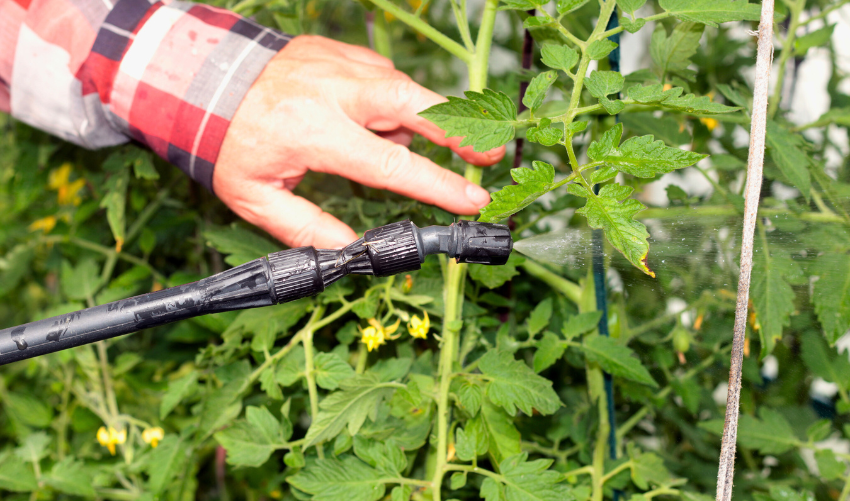Garden pests can be a real headache for any gardener. They damage plants and can ruin hard work.
This guide will help you spot these pests quickly. You will learn effective methods to control them. We will also discuss ways to prevent pests from invading your garden in the first place.
Common Garden Pests And How To Identify Them
Dealing with garden pests is a common challenge for many gardeners. Identifying these pests is the first step to solving the problem. Knowing the signs of pest damage helps in taking timely action.
Aphids, Whiteflies & Spider Mites
Aphids, whiteflies, and spider mites are small insects often found on leaves. They are notorious for causing yellowing and stunted growth in plants.
- Aphids: These tiny, pear-shaped insects come in various colors, including green, black, and yellow. They cluster on the undersides of leaves.
- Whiteflies: Small, white, moth-like insects. They often fly up when you disturb the plant.
- Spider Mites: Very small and difficult to see. Look for fine webbing on leaves, which is a key indicator.
Regular inspection of your plants can help catch these pests early.

Slugs, Snails & Caterpillars
Slugs and snails are common garden pests that can cause serious damage. Caterpillars are another type of pest that can harm your garden.
- Slugs: Soft-bodied creatures that crawl on leaves and soil. They leave shiny trails and chew large holes in leaves.
- Snails: Similar to slugs but have a hard shell. They also create slime trails and eat plant foliage.
- Caterpillars: Larval stage of moths and butterflies. They can be green, brown, or striped and are known for chewing leaves.
Check your plants regularly to minimize damage.

Beetles & Borers
Beetles and borers can be harder to detect early. Beetles chew holes in leaves, while borers bore into stems and roots. They can cause significant damage if not addressed quickly.
- Beetles: These insects vary in size and color. Look for holes in leaves and beetles on plants.
- Borers: These pests are often hidden inside the plant. Look for wilting or dying plants as a sign.
Regular monitoring can help you manage these pests effectively.
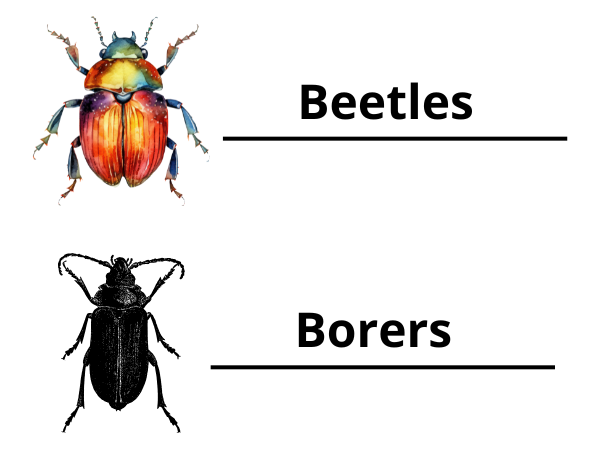
Signs Of Pest Infestation In Your Garden
Identifying signs of pest infestation is the first step. Early detection can save your plants from serious damage. Understanding how to spot pests helps in taking effective action.
Visual Symptoms On Leaves And Stems
One of the easiest ways to spot pests is by examining the leaves and stems of your plants. Look for:
- Yellowing: Leaves may turn yellow when affected.
- Holes: Small holes in leaves suggest insects are feeding.
- Curled leaves: Curling can indicate pest activity.
- Sticky residue: A sticky film on leaves often comes from pests.
Regular checks are important. Catching these signs early can help protect your plants.

Damage To Roots And Underground Parts
Damage may not always be visible above ground. Pests can attack roots and underground parts. This damage can lead to wilting or stunted growth without visible leaf damage. Signs to watch for include:
- Wilting: Plants may wilt even when watered.
- Stunted growth: Plants grow slowly or stop growing.
- Discoloration: Roots may appear dark or mushy.
Check the soil for signs of pests. Digging lightly can reveal issues. Here’s a brief list of pests that damage roots:
- Wireworms
- Grubs
- Nematodes
Healthy roots are vital for plant growth. Regularly inspect the soil to prevent root damage.

Presence Of Eggs, Larvae, Or Trails
Finding eggs or larvae is a clear sign of an infestation. Check the undersides of leaves for eggs. Look in moist soil for larvae. Signs include:
- Eggs: Small clusters often found on leaves.
- Larvae: Young pests may be eating leaves or roots.
- Trails: Some pests leave trails, indicating their presence.
Identifying these signs quickly can help you take action. Protect your garden by being vigilant.
Pest Control Tools & Products We Recommend
Many tools and products can help you manage and prevent pest problems. Here, we share our top recommendations for pest control tools and products that are effective and easy to use.
Organic Sprays
Organic sprays are a great choice for pest control. They are made from natural ingredients. These sprays are safe for plants, pets, and people. They help control various pests like aphids, mites, and whiteflies. Here are some popular organic sprays:
- Neem Oil: Derived from the seeds of the neem tree. It disrupts pest life cycles.
- Insecticidal Soap: Targets soft-bodied insects. It suffocates pests on contact.
- Garlic Spray: Acts as a natural repellent. Insects dislike the strong smell.
When using organic sprays:
- Apply in the early morning or late evening.
- Test on a small plant area first.
- Reapply every 7-14 days for best results.
Organic sprays are effective and eco-friendly. They help you maintain a healthy garden.
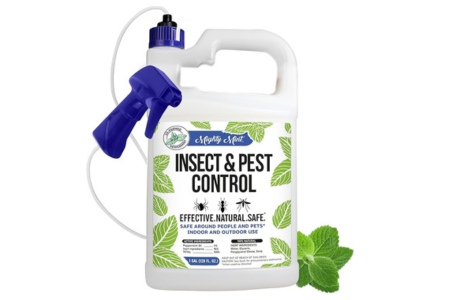 |
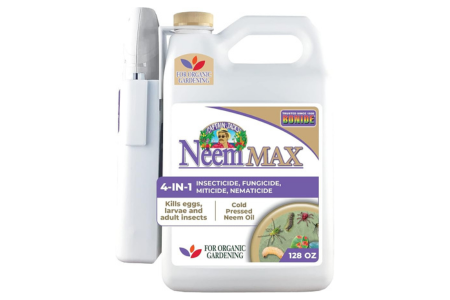 |
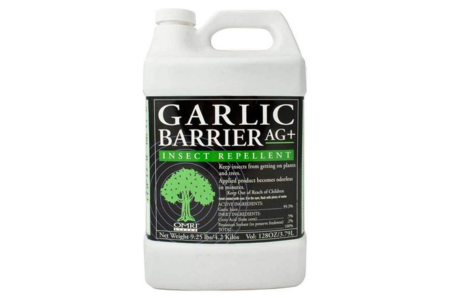 |
|---|
Netting & Soil Monitors
Netting is another effective tool against pests. It creates a barrier that prevents insects from reaching your plants. This keeps out birds, insects, and other pests. Here are some benefits of using netting:
- Protects plants from damage.
- Allows sunlight and rain to reach plants.
- Reusable and easy to install.
Soil monitors also help keep your garden healthy. They measure moisture and nutrient levels. Proper soil health reduces pest problems. Here are the types of soil monitors:
| Type | Benefits |
|---|---|
| Moisture Meter | Ensures plants receive the right amount of water. |
| pH Tester | Helps maintain optimal soil acidity for plants. |
| Nutrient Tester | Measures key nutrients to promote healthy growth. |
Using netting and soil monitors can greatly improve your gardening experience. These tools help prevent pest problems before they start.
Organic Pest Control Methods
Organic pest control methods offer safe and effective ways to protect your plants. These methods are gentle on the environment and help maintain the health of your garden.
Neem Oil, Soap Sprays & Natural Predators
Neem oil is a powerful natural pesticide. It comes from the seeds of the neem tree. This oil is effective against soft-bodied insects without harming plants.
Soap sprays are another great option. They work by suffocating pests. You can make a simple soap spray using:
- 1 tablespoon of liquid soap
- 1 quart of water
Mix well and spray on affected plants. This method is safe for most plants and helps control aphids, spider mites, and whiteflies.
Ladybugs and lacewings are effective at keeping pest populations down. They feed on harmful insects, helping to keep your garden healthy.

Companion Planting For Pest Repellence
Certain plants can help protect others when grown together. For example, use marigolds to deter pests naturally. They produce chemicals that repel harmful insects.
Basil is another effective companion plant. It not only enhances the flavor of tomatoes but also repels flies and mosquitoes.
Here are some effective pairings for companion planting:
- Tomatoes with basil
- Cabbage with dill
- Carrots with onions
This method creates a balanced garden ecosystem. It reduces the need for chemical pesticides and promotes healthy plant growth.
Manual Removal And Traps
Manual removal is a straightforward way to control pests. Handpick pests off your plants. This method is simple and effective.
Beer traps are also useful. Fill shallow containers with beer and place them in the garden. Pests like slugs and snails will be attracted to the beer and drown.
Here are some tips for manual removal and traps:
- Inspect plants daily for pests.
- Use gloves to handle pests.
- Place traps in areas with high pest activity.
Combining these methods can lead to a pest-free garden. Stay vigilant and enjoy the beauty of your plants.
Chemical Solutions – Use With Caution
Chemical methods are an option but should be used with caution. Pesticides can be effective but may also harm beneficial insects and the environment. Understanding when and how to use them is crucial.
When To Use Pesticides
Using pesticides is a serious decision. They should only be used when infestations are severe and other methods fail. Before applying any chemical, assess the situation carefully. Here are some guidelines:
- Identify the pest correctly.
- Check for natural predators in your garden.
- Use non-chemical methods first, such as traps or barriers.
- Monitor your plants regularly for signs of damage.
Consider creating a pest management plan. This plan can help you decide when to use pesticides.
Types Of Pesticides And Application Tips
Several types of pesticides are available. Each type targets specific pests. Here are some common categories:
- Insecticides: Kill insects.
- Herbicides: Control weeds.
- Fungicides: Combat fungal diseases.
When choosing a pesticide, select pest-specific formulas. This ensures the chemical targets the pest effectively without harming other plants. Here are some application tips:
- Read the label carefully.
- Wear protective gear, such as gloves and masks.
- Avoid spraying near blooms or edible crops.
- Use early morning or late evening for application to reduce harm to beneficial insects.
Proper application is crucial. Follow the recommended rates and methods for the best results.
Safety For Pets, Pollinators & Edible Plants
Safety is paramount when using pesticides. Pets and pollinators can be affected by chemical exposure. Always prioritize their safety. Here are some steps to take:
- Keep pets indoors during application.
- Avoid using pesticides near flowering plants to protect pollinators.
- Ensure that edible plants are safe to consume after pesticide application.
Consider using organic or less harmful alternatives. These options can reduce risks to pets and the environment. Always check the label for safety information regarding edible plants.
Preventing Future Pest Problems
Prevention is the best way to keep your garden healthy. This section focuses on how to prevent future pest problems.
Healthy Soil And Regular Maintenance
Healthy soil is the foundation of a thriving garden. Strong plants can resist pests better. Boost plant immunity with compost. Compost adds nutrients and improves soil structure.
Regular maintenance is crucial. Here are some easy tasks to follow:
- Water plants properly.
- Remove dead leaves and debris.
- Practice crop rotation to prevent soil depletion.
- Prune plants regularly to promote air circulation.
Consider using a table for tracking maintenance tasks:
| Task | Frequency | Notes |
|---|---|---|
| Watering | Weekly | Check soil moisture |
| Weeding | Bi-weekly | Remove weeds before they seed |
| Fertilizing | Monthly | Use organic fertilizers |
Regularly maintaining your garden helps keep pests away. Healthy plants are less attractive to pests.
Barrier Methods And Netting
Using barrier methods can keep pests out. Physical barriers block pests from reaching your plants. Use row covers to protect seedlings. They allow sunlight and water in while keeping pests out.
Here are some effective barrier options:
- Row covers for young plants.
- Collars around stems to deter cutworms.
- Fencing to keep larger pests away.
Ensure barriers fit properly. Check for gaps where pests could enter. Regularly inspect these barriers for wear and tear.
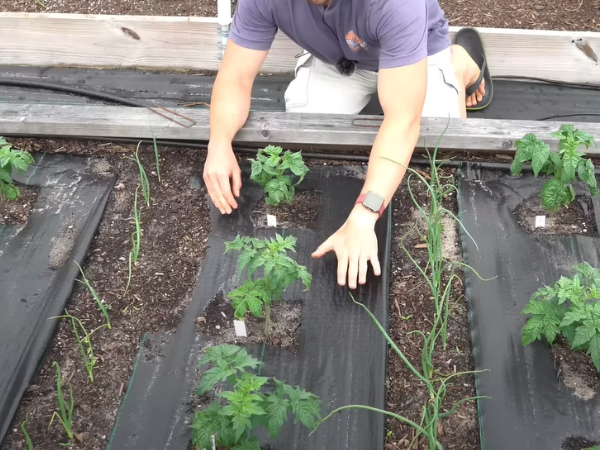
Routine Inspections And Early Action
Weekly garden checks help you catch problems before they spread. Look closely at leaves, stems, and soil. Early detection can save your plants.
Here are steps for effective inspections:
- Walk through your garden weekly.
- Check for unusual spots or holes in leaves.
- Look for signs of pests, like webs or droppings.
Act quickly if you find pests. Remove them by hand or use organic sprays. Keeping records can help track pest activity. This way, you can adjust your prevention methods as needed.

